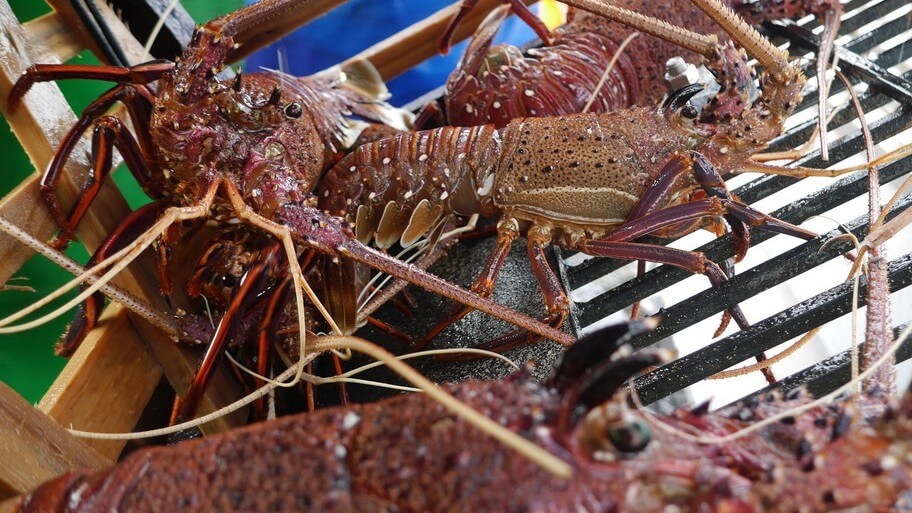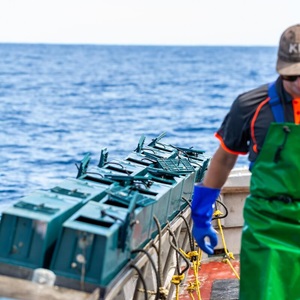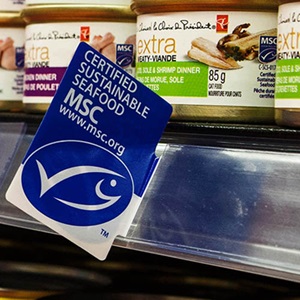In Australia and New Zealand, the introduction of bycatch reduction devices has been vital to both protecting marine life and supporting the long-term sustainability of fisheries.
Turtle excluder devices (TEDs)
A turtle excluder device (TED) is a grid of bars fitted into a trawl net. It enables captured sea turtles and other large animals including sharks and rays to escape through an opening, while retaining the target catch, such as prawns or scallops. TEDs are designed to guide larger animals towards an escape hatch, helping to prevent turtles from drowning.Turtle Excluder Device (TED) Animation
Sea lion excluder devices (SLEDs)
Sea lion excluder devices (SLEDs) are used in some rock lobster fisheries, particularly in Western Australia, to prevent Australian sea lions from entering pots and becoming trapped. SLEDs used in the Western Australian rock lobster fishery consists of a bar that obstructs sea lions from getting their heads inside lobster pots and becoming stuck.Sea Lion Excluder Device (SLED)
The development of the sea lion exclusion device for WA fishers came about through an MSC condition of certification placed on the fishery. Independent auditors saw an increasing trend in juvenile sea lion interactions in the fishery, especially in fishing locations close to vulnerable sea lion colonies. The fisheries’ stakeholders were required to find an effective solution that could be commercially implemented to reduce interaction rates.
After the use of SLEDs became mandatory across the fishery, the number of sea lion mortalities dropped from 20 in 2006 to zero in 2012, and there have been no fatalities since.
Bird scaring lines (tori lines)
Bird scaring lines, often known as ‘tori lines’, are used across fisheries to reduce seabird interactions, especially with vulnerable albatross and petrels. These lines are fitted to create a barrier keeping birds away from fishing vessels and are set above and behind a vessel during fishing operations. Streamers attached to the line move in the wind to deter birds from approaching baited hooks, reducing the risk of birds becoming accidentally caught. They also prevent birds from striking dangerous areas of a fishing vessel..tmb-large1920.jpg?Status=Master&Culture=en-AU&sfvrsn=6b3cef90_1)
Escape hatches in lobster fisheries
Escape hatches are built into lobster pots in the Western Australian rock lobster fishery to let undersized lobsters and some non-target species escape before the pots are hauled. Required by law and developed through research partnerships, these slots ensure that only mature, legal-sized lobsters are retained, helping protect juvenile stocks and reduce bycatch. Their use contributes to the ongoing sustainability of the fishery, helping to maintain MSC certification.
Examples in MSC certified fisheries in Australia and New Zealand
- Northern Prawn Fishery: TEDs and other bycatch reduction devices have reduced turtle bycatch by more than 99 percent.
- Western Australian Rock Lobster fishery: Escape hatches in pots ensure only the correct sized lobster are caught and SLEDs reduce the interaction of Australian sea lion pups.
- New Zealand Hoki and Southern Blue Whiting fisheries: Bird scaring lines greatly reduce seabird bycatch, supporting the recovery of protected species.
Benefits of bycatch reduction devices
The use of bycatch reduction devices brings clear benefits, including:
- Protection of threatened and endangered species
- Improved sustainability and the ability to seek best practice fishery certification for their environmental performance
- Compliance with national and international regulations
- Enhanced reputation and market access for Australian and New Zealand seafood
How these devices were invented, trialed and implemented
Early versions were trialed in Australian and New Zealand waters with support from NGOs, the FRDC, AFMA, New Zealand Ministry for Primary Industries, state departments, and universities. Fishers provided practical feedback, helping to refine devices for effectiveness and ease of use.
Once benefits were demonstrated, bycatch reduction devices were introduced through voluntary adoption, incentives, and, ultimately, helped several fisheries achieve and maintain MSC certification. Ongoing monitoring and innovation continue to ensure bycatch reduction devices remain effective and up to date with best practice.
Find out more

What is bycatch?
What is bycatch, why it's a problem and how it is reduced.

FAD-free tuna
Read how Fish Aggregating Device (FAD) free tuna is a proven method of preventing bycatch.

The MSC standards
Up to date globally-recognised framework for assessing a fishery's sustainability and management.
